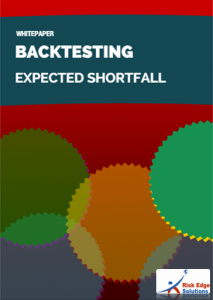
A New “Definitive” model for Risk
Risk Edge has recently released its latest Whitepaper on Back-testing Expected Shortfall. The paper presents a New “Definitive” Model for Risk Management and answers several long-standing questions about managing Risks:
- Why use VaR when it doesn’t give clarity of extreme losses?
- Can we use Expected Shortfall (ES) to give us insights into tail-end losses?
- Can a model be built such that it enables companies to scale their Risk Capital gradually?
- Can a comprehensive model allow us not just 95%, but 100% visibility into our potential losses without enhancing Risk Capital much?

These questions are some of the most asked questions to Risk Managers of any organizations. With this latest whitepaper, Risk Edge provides guidance on one such model that can provide answers to these questions. The Whitepaper uses empirical data of 6 different commodities and build 2 new Back-testing parameters that’ll ensure that your organization is always solvent – no matter how extreme the losses. While relying on historical data for extreme losses, the model discusses a new framework that allows commodity trading / processing companies to gradually build their Risk war-chest, instead of a huge one time pay-out from trading capital.
Back-testing of Expected Shortfall has received a lot of attention post financial crisis, with organizations realizing that just managing Risks using VaR may not be sufficient. Morgan Stanley recently came up with their own model on Backtesting ES, calling it a potential regulatory measure that could replace VaR world-wide. However, lack of proper research and models on using Expected Shortfall as a more “definitive” Risk measure has been a consistent hurdle for companies in adopting Expected Shortfall.
You can download the whitepaper here. This paper will certainly put to rest a lot of uneasiness about using VaR and ES for managing Risks and will give comfort to the shareholders since it enables Risk teams to put their money where their mouth is – with the Risk Capital.

